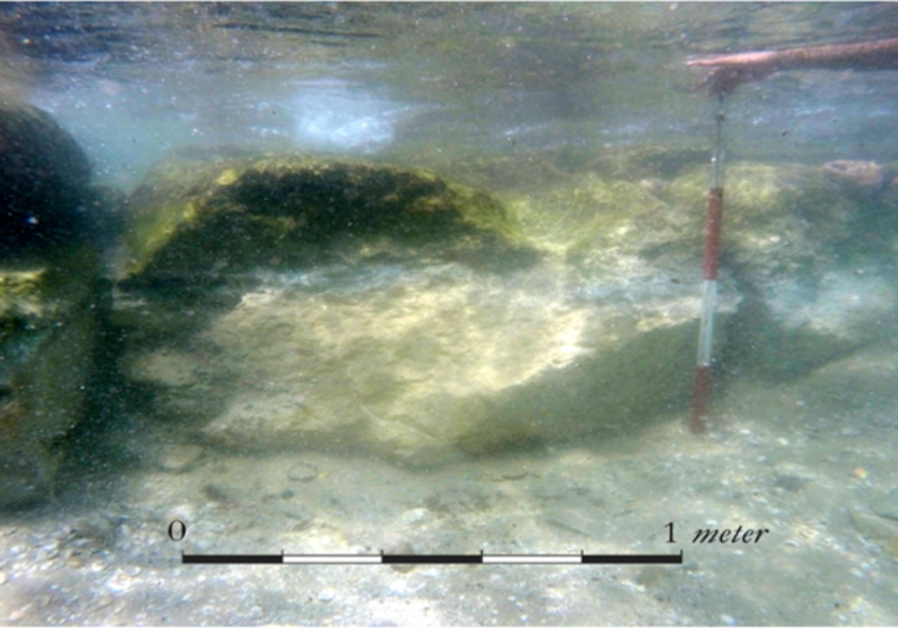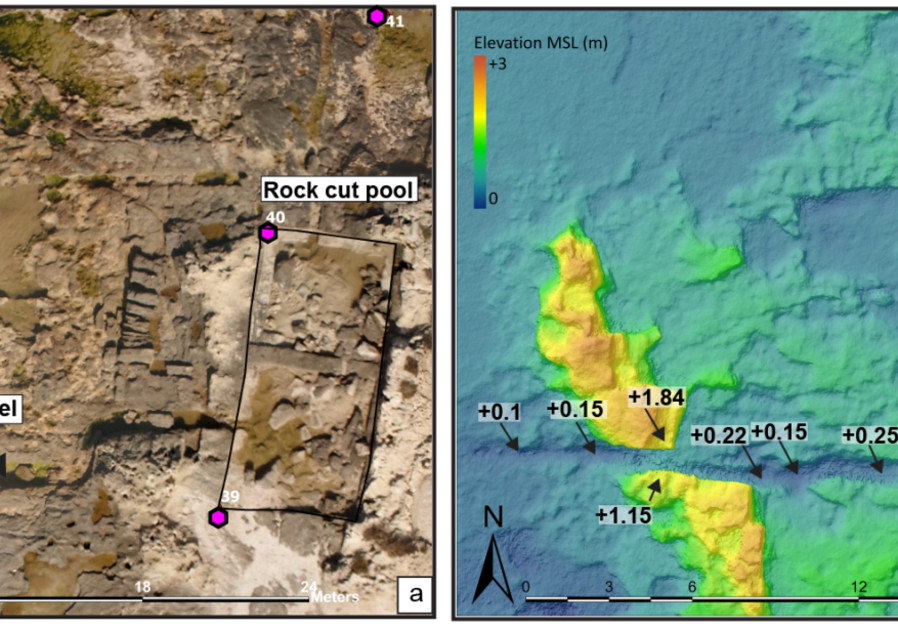Some 2,100 years ago Israel experienced a drastic rise in its sea level, which caused the loss of important infrastructure and might have contributed to the decline of some cities in the region, a new study by Israeli and international scholars has shown.
The researchers considered a period of some two millennia, starting from the Middle Bronze Age (2,500 BCE) up to the Roman Period until the 3rd century CE.
“We saw that from the Middle Bronze Age to the end of the Iron Age, a span of some 700 years, the sea rose very slowly, maybe half a meter, but between the Hellenistic period and the Roman period, the sea rose 2 or 2.5 meters within 200 years, which is a lot,” said Mediterranean Archaeology Prof. Assaf Yasur-Landau, head of the Recanati Institute of Marine Studies at the University of Haifa and a co-author of the paper published in the academic journal PLOS ONE last week.
The project to trace water-level rise in Israel’s coastal cities along the Mediterranean Sea, headed by the universities of Haifa and California, San Diego, focused on the data from the site of Dor, some 21 kilometers south of Haifa.
“In the Bronze Age, Dor was a Canaanite city, a port city entertaining contacts with Cyprus, in the Iron Age it was a Phoenician city, with ties with Cyprus and Egypt,” Yasur-Landau said. “In the 9th and 8th centuries it was in the hands of the Israelites and the trade decreased, but later, when the Assyrians conquered the area, they returned the city to the Phoenicians and the commercial exchanges flourished again. From this point we see a rise in the maritime power of Dor all the way into the Persian and Hellenistic period, when Dor reached its peak, an incredibly prosperous center with connections in all the Mediterranean.”
In the context of the history of the Levant, Persian period refers to the time of the domination of the Persian Empire, from mid-6th to the second half of the 4th century BCE, when the Hellenist period began, lasting until the arrival of the Romans in the 1st century BCE.
“During the Roman period, Dor was still important, until the construction of Caesarea which became the main port in the area,” Yasur-Landau noted.

As explained in the paper, the project added nine new relative sea level (RSL) data points, to the 13 which were previously known.
Yasur-Landau said that they found an underwater wall and sea gate from the Bronze Age built on dry land, indicating a lower sea level at the time.

“We needed data from the Iron Age and the Hellenistic period to fill the gap between the information we had about the Bronze Age and the Roman time in order to understand how fast the sea rose,” Yasur-Landau said.
What’s more, historical and archaeological evidence of deserted or declining coastal cities supports the theory that a rapid rise saw buildings flooded and coastlines disappearing.
“We have seen similar evidence of a decline in Acre and other Hellenistic coastal cities, and we speculate that the inhabitants of the period, seeing entire buildings gradually covered by the water, recognized the rapid rise in sea level, but in many cases failed to adapt to the new conditions successfully,” Dr. Gil Gambash, a historian from the University of Haifa, noted.
According to the experts, the rise was especially dramatic.
“We do not know of such an increase in [recorded] history. It is an increase that is recognized only when talking about the end of the ice age and the great melting of glaciers,” Professor Thomas Levy of the University of California, San Diego said.
Levy said that as an effect of climate change, the sea level is currently expected to rise of about one meter by the end of the 21st century, stressing how the phenomenon they uncovered was even more drastic.
According to Yasur-Landau, a rise similar to the one that Israel experienced some 2,000 years ago would cause much of the coastline to disappear, as well as recurring flooding in coastal Israeli cities like Tel Aviv.
The researchers do not know what caused the sea-level to rise some two millennia ago, but they hope to find out with further studies. They also attested that the current sea-level is similar to the ones from Roman times.
“The past is not a mirror image of the future,” Yasur-Landau said, when asked if their findings can offer insights into the issue of sea-level rise in our times. “But I would say that the sea-level had a very profound impact on vital infrastructure in the past and it is very likely that a quick rise will have a very severe impact on critical infrastructure in the future, such as drainage, harbors, and coastal aquifers and we should keep it in mind.”
